Finding ways to encourage a large number of responses to your surveys is an art. But so is analyzing the data and turning it into actionable insights. Let's find out how to write a survey report.
Once you’ve done all the hard work of persuading people, be it your customers or employees, to fill out your survey, the last thing you want is to have all that important data go to waste.
This happens when surveyors take the answers at face value. The outcome becomes actionable only when you properly analyze the survey data.
That’s why it’s so important to present survey results in a digestible way.
.avif)
What is a survey report?
A survey report is a document with important metrics gathered from customer feedback.
The goal of a survey report is to present the data in a full and objective manner. The report sums up all the results that were collected.
A complete survey report includes:
- Completion rates
- Number of responses
- Date of last response
- Survey views
- Breakdown of answers per survey respondent
- Breakdown of closed-ended questions
- And more
You can make the reports manually in Google Sheets or make your life easier, using customer feedback platforms, like Survicate. If you choose the latter, the tool will automatically calculate and present the data visually for you.
.avif)
Let’s analyze why these metrics are important and what they tell you.
Completion rate
The completion rate is the number of questions answered divided by the total number of questions in your survey.
If you have a survey of 12 questions, but exactly all respondents only answered 6 of those, you have a completion rate of 50%.
Depending on the survey tool you use, the completion rate can indicate many things, as different tools may take different factors into account. Some tools, like Survicate, record partial responses. Others will not record any data until all questions are answered.
For instance, if most respondents were only asked 6 questions out of 12 because half of the questions were not relevant and were skipped, that’s likely a completion rate you’ll be happy with.
But what if your 50% survey response rate results from people skipping questions willfully? It might suggest that you may need to improve your survey.
With Survicate, you will see responses from partially completed surveys so you don’t miss out on valuable data.
Number of responses
You need to know exactly how many people responded to your survey to have enough data to properly analyze your survey results. Beware – some forms of survey tools may not count individual respondents, instead just their responses to individual questions.
Hence, it’s important that your survey platform shows you how many different people responded, so you can determine whether you have a significant sample size.
And how do you determine the survey sample size you need?
This depends on what data you want to analyze – from your entire audience or just those from a chosen segment.
For example, if you are a beauty brand that sells face creams specifically for women over thirty-five, you may find out in your survey that you also have younger women who use your products.
You may decide to segment these responses into separate age groups to find out more about other age groups.
So, if you were surveying them on the effectiveness of a new age-defying cream, you may find that the women under thirty had very different responses to those in their sixties.
This is the kind of data that you could have overlooked but can help you with your marketing efforts.
If you are using Survicate, make sure to integrate with a distribution tool that gathers demographic data. You can also include demographic-style questions in your survey.
Date of last response
If you’re running a survey for a short and specific time period this may not seem important.
Still, if you ask customers to fill out a customer service feedback survey after every ticket is closed, you may get years of data. But again, segmenting responses by how fresh they are can give you more accurate findings.
On the other hand, if you introduce a redesign on your website, develop a new feature, or make some other significant change, a long-term NPS or CSAT survey can show you the impact.
When you are able to determine the response time, you can split your data and analyze responses relevant to each new implementation.
Survey views
You need to know the total number of survey views and the total of unique survey views (the number of total views versus the number of different people who viewed the survey, as some people may have viewed it more than once).
If there is a large disparity between these two totals, this can point to several things.
First, your survey may be targeted at a large audience and the questions aren’t relevant enough for all your respondents to answer.
Respondents may also view the survey and then decide not to take it because:
- They don’t have the time
- They don’t have the right device (things like open-ended questions can be difficult and tedious to answer on a small phone screen)
- They see the first questions and decide that taking the survey isn’t for them
Or, maybe, the same people are taking your survey over and over again. Such insights can let you know whether you need to work on your survey design or customer segmentation. Survicate lets you limit the amount of times a survey can be taken in a single session or in a given browser.
Breakdown of answers per survey respondent
You want to see the breakdown per respondent, so you can see how individuals answered all the questions in the survey. This can be helpful for seeing trends in certain respondents’ answers.
For example, you may notice a pattern that each person who dealt with a particular customer service agent gave a negative response to your Customer Effort Score (CES) survey.
Then you know you need to retrain that agent to improve their performance.
And if you integrate with particular tools like Google Analytics or Intercom, you may even be able to capture demographic data and contact the respondents individually.
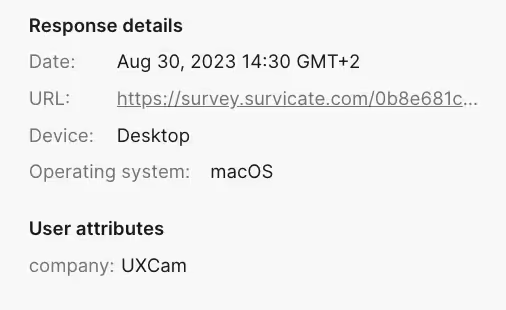
Breakdown of closed-ended questions
When you think of a survey report, you likely picture graphs and pie charts displaying the data attained from closed-ended questions.
.avif)
This is important for a good survey report because it allows you to take in a large quantity of data at a glance, and can be easily distributed to those who may find the data valuable.
Graphic representation makes survey analysis user-friendly and doesn’t require a lot of time or prior skills to analyze.
In the example below, we can see the NPS (Net Promoter Score) response breakdown – we know that over 56% of respondents are promoting our brand, 36% are detractors, and we had 25 overall responses. All of this data is plain to see and easy to interpret.
.avif)
Survey report example
If you’re not sure how to present your questionnaire results, choose a survey tool that will prepare a mockup for you. Make sure the software you use doesn’t just spit out rows of data in a spreadsheet.
Your survey report should present the most important information in a neat and easy-to-understand way so you can draw conclusions quickly.
With Survicate, you don’t have to create a survey report manually. You get a results summary within the dashboard, with all the most important metrics ready to screengrab.
Depending on the type of survey you run and the questions you ask, you might see the results presented differently.
NPS survey report
With Survicate’s NPS survey report, you can see at a glance all the most important stats you need to be aware of.
From the total response number to the completion rate, you can sort the stats by date and compare how they fluctuated over time.
When you run a survey report with Survicate, you will see a breakdown of all the responses in the form of a graph. What’s more, you’ll be able to review how the score changed over time, which can be helpful in trying to identify any issues with your product or service from the users’ perspective.
We recommend you integrate Survicate with Google Sheets to get live updates in spreadsheets. If you never want to miss out on feedback, you can also integrate your Slack or Microsoft Teams with Survicate for convenient notifications. With the click of a single button, you can jump to survey results and even follow up with the respondent.
Add more than just individual survey reports
With Survicate, you can go beyond simple survey reports and create complete feedback efforts analysis reports across surveys and sources, including external review sites, calls, and applications.
How?
With three powerful features: Dashboard, Insights Hub, and Research Assistant.
Dashboards: A visual command center for your feedback
.avif)
Dashboards in Survicate allow you to create customizable, visual overviews of your survey results. Instead of digging through individual responses or jumping between surveys, you can build a real-time dashboard that pulls in data from one or many surveys.
You can add:
- widgets for specific questions across surveys
- combined NPS or CSAT scores across different channels
- trend visualizations over time
- filters to segment by audience, feedback category, or channel
This makes it easy to share a live overview of key feedback metrics with your team—no spreadsheet needed.
Insights Hub: Automatically categorized and analyzed data across sources
.avif)
Insights Hub is your central feedback library inside Survicate. It gathers and categorizes feedback not only from surveys, but also from channels like app store reviews, customer support tickets, or any imported qualitative data.
What sets it apart:
- Automatic AI categorization into topics (e.g., onboarding, performance, UX)
- Sentiment detection across all sources
- Unified view of structured and unstructured feedback
- Filtering by source, keyword, date, or rating
- Ability to pin, edit, or resolve insights
- Ability to transcribe meetings and analyze them in seconds
Whether you're researching product gaps or tracking customer sentiment, Insights Hub gives you a consolidated, always-updated source of truth.
Research Assistant: AI-powered insights, on demand
Research Assistant helps you make sense of your survey and feedback data faster. It’s an AI built into Survicate that lets you ask plain-language questions—like “What are the most common complaints about our checkout flow?”—and get summarized answers pulled directly from your live data.
It supports questions like:
- What are the top feature requests this quarter?
- Why are users unhappy with onboarding?
- What’s driving NPS detractor feedback?
You can also limit analysis to specific surveys or timeframes, like uncovering the results from a specific feature launch in Q4. Research Assistant is especially helpful when you want to identify trends, explain changes, or prep for product and stakeholder meetings—without manually analyzing dozens of open-text answers.
Go beyond survey reports with Survicate
You don’t need a dedicated team to crunch survey insights for you. A great survey platform will organize your respondents’ data into an easy-to-read dashboard and help you start acting on the data you’ve received.
Start creating awesome survey reports, even across surveys and feedback sources, in minutes with Survicate's powerful analysis and AI features. Survicate comes with a generous free trial that gives you access to all Growth plan features for 10 days. Sign up and start collecting feedback today!









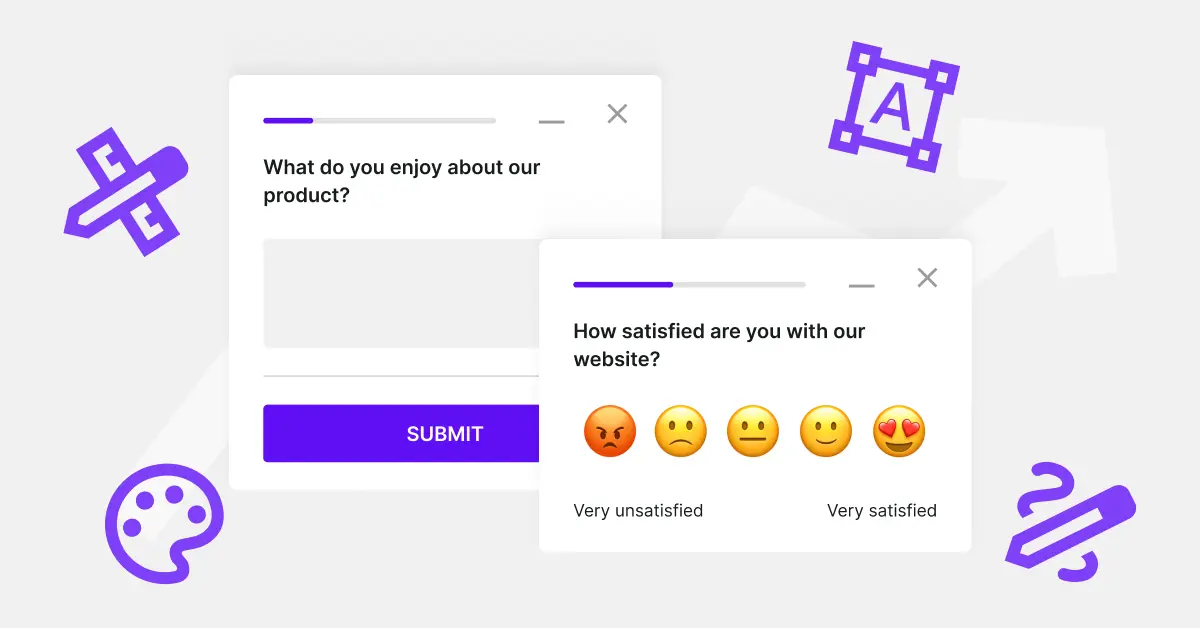
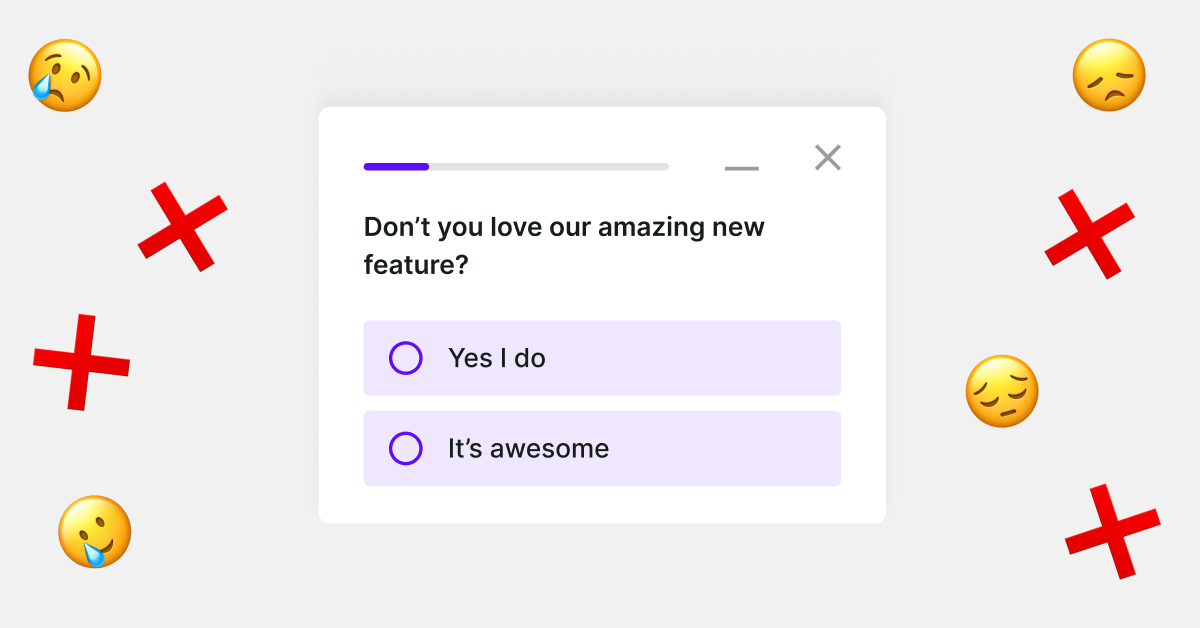
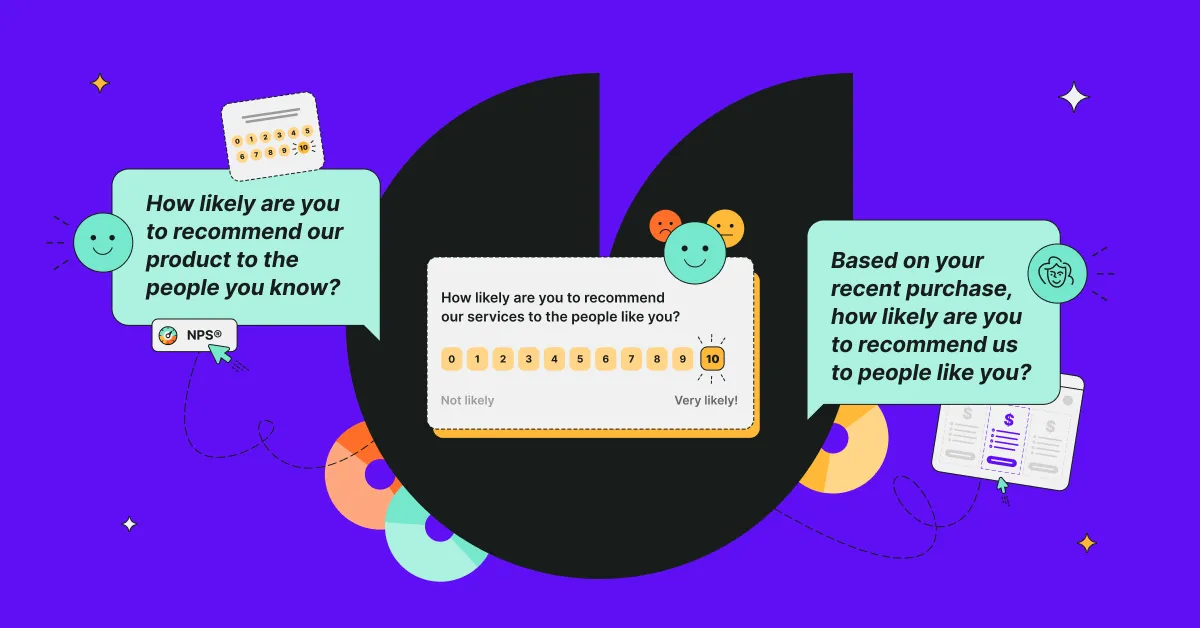
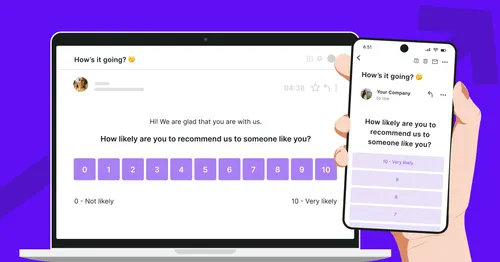
.svg)

.svg)



